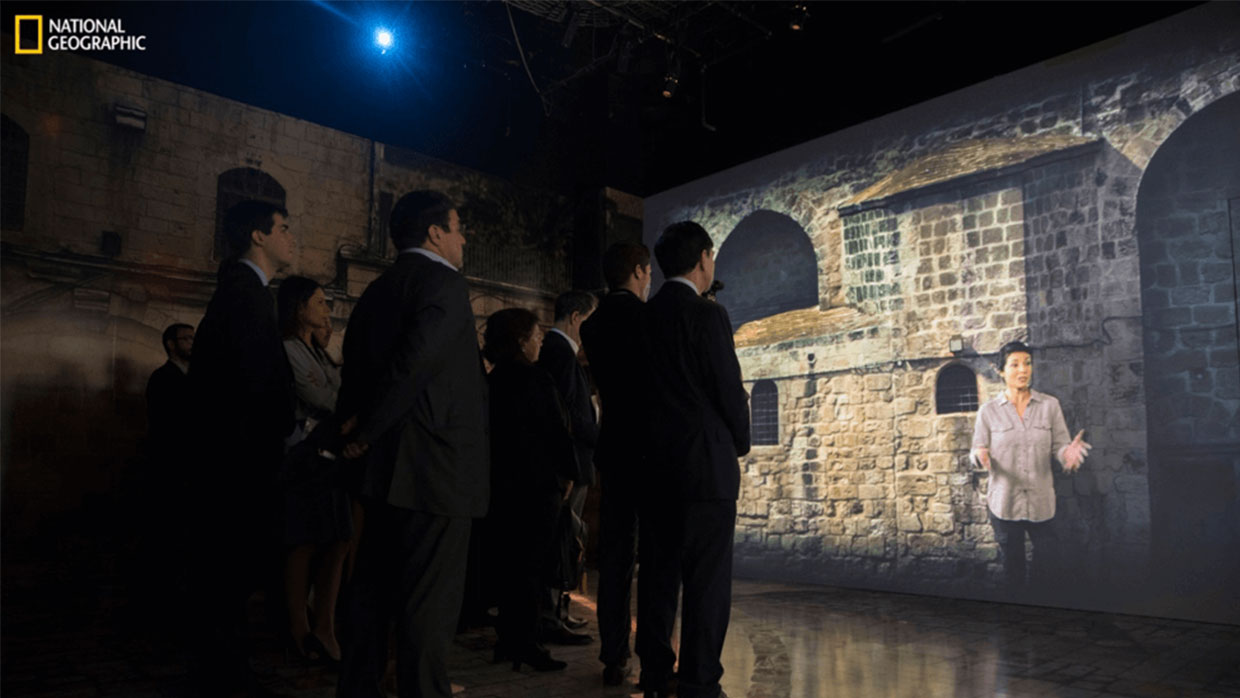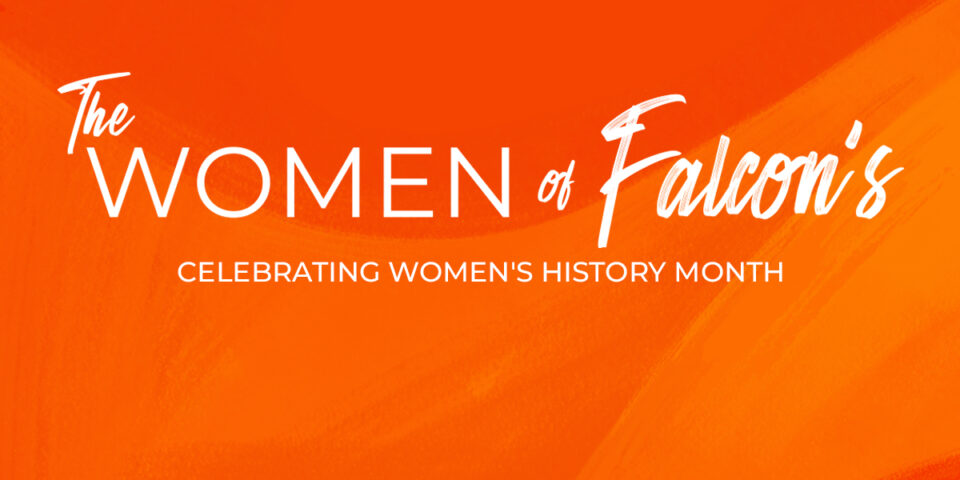Making the Cut
Most people are familiar with the concept of film editing, especially in the context of a standard rectangular format for a movie theater or TV screen.
Edits between the shots are commonplace. However, when you are talking about editing for themed experiences and special venues, the words “standard” and “common” are often removed from our vocabulary. Rarely do we edit for a single rectangular screen; it’s often for a dome, a dark ride, or a mixed reality experience.
At Falcon’s, we have spent years perfecting the media-in-the-round experience. Examples include our award-winning Dragons Treasure™ attraction, 3D dark rides such as the classic Curse of DarKastle, and films for exhibitions, such as the 10K 3D presentation for Becoming Jane: The Evolution of Dr. Jane Goodall at the National Geographic Museum in Washington, D.C.

3D Immersive Theater at National Geographic Museum's Becoming Jane Exhibition
So how does an editor weave a story together with so many variables? The key to success is to think of it as choreographing a physical experience, much like a play, not just a film on a screen. Personally, I am so grateful that I started my career in theatrical production. I think back to the lessons I learned while working on performances in physical spaces and the audience’s perception of those spaces. That knowledge has helped me lead our editorial team to better integrate with physical design.
As we start an editorial project, we often use forced perspective overlays or 3D layouts that simulate the space where guests will be watching or moving through the presentation. We then map our media into this virtual environment to simulate what it may look like in the physical one. We often start editing projects in a variety of resolutions and aspects until we define how it will play out in this modeled space. Next, we finesse each video element until it becomes one video in a batch of many that will play seamlessly together in the final venue.
Projects such as Halo: Outpost Discovery were realized because traditional graphic artists, editors, and compositors worked together to bring to life the visual style and feel of the beloved Halo video game franchise. The development of this immersive experience not only used virtual reality for tuning but also testing in our onsite Spheron® Dome Theater to ensure the final experience would live up to Halo fans’ expectations of quality. These tools also allow our clients to gain a better understanding of how the guest will feel in their new attraction.
Sometimes we mix presentation formats for even more intriguing effects. A great example of this was our Heroes and Legends film, “Through the Eyes of a Hero.” The film is shown on a 220-degree compound curve screen that wraps around guests who are on a pedestal near the center of the screen. This film opens with the illusion that there are three 16:9 aspect ratio screens hanging on the wall presenting the story of America’s first manned space flight.
Then we pull a surprise switch on the audience, as the camera zooms into the eye of a still photo of the astronaut on one of the screens. Suddenly, the film is this all-encompassing 3D experience that fills the guest’s eyes. The guest is then looking through the eyes of Alan Shepard, walking toward his rocket in a world that is in vivid 6K resolution and stereoscopic 3D. The illusion is like watching something on TV and then being teleported into the world within the TV. In the physical venue, we also added extra lighting and wind effects to enhance this transition, which bolstered the crowd’s enjoyment!
Another standout example is a project we did for the National Geographic Museum called Tomb of Christ: The Church of the Holy Sepulchre Experience. We designed one of the edits knowing that the media would be projection-mapped across two walls at 90-degree angles from each other with a structural column in the center.
The illusion is that you are standing in the courtyard of the Church of the Holy Sepulchre. Off to the left side was a virtual tour guide at human scale. Since traditional film cuts and edits would have been visually jarring to the guests standing in the space, we moved the environment around, as if guests were levitating with the tour guide around the building. A surprise awaits guests at the end, as suddenly the projected doors open, and visitors realize there are actually physical doors they can walk through.
In the edit, we designed this with a forced perspective template of how the space would look to the guests. We knew the dimensions of the physical doors and the size of the walls. From there, we considered the guests as the “camera’s perspective” and took them on a journey across this great virtual stage we modeled.
This type of immersion is a result of editorial’s close collaboration with our masterplan design team. Having all facets of development under one roof is seriously advantageous because our team can actively brainstorm the feel and design of an experience during the entire development process.

Photos by Rebecca Hale/National Geographic The National Geographic immersive exhibition "Tomb of Christ: The Church of the Holy Sepulchre Experience” virtually transports visitors to the Church of the Holy Sepulchre, one of the world's most sacred, ancient monuments. This historic renovation project will be featured in National Geographic magazine’s cover story in the December 2017 issue and as part of an upcoming episode of Explorer, airing on December 3, 2017 on National Geographic.
Beyond this, having an in-house audio team with both Hollywood film and AAA-rated video game sound design experience opens a whole new dimension of immersion. Be it a personal binaural audio headphone experience or a 57.17 channel surround sound dome experience, we have the proven ability to create a magical auditory experience.
We also have strong relationships with many world class composers, arrangers, and orchestral teams who can create a score that will most certainly hit the emotional mark.

Orchestra recording Turtle Trek® score for SeaWorld®
These are just a few examples of the creative process we use here at Falcon’s. As I stated in my opening thoughts, the words “standard” and “common” are missing from the equation. What our editing team enjoys most is having an opportunity to design something unique with every exciting endeavor. We want guests to be left in awe and clients to feel that their vision was brought to life in the most spectacular way.
Meet The Author

Jesse James Allen
Editorial Director
Jesse is an experienced technical and creative leader. As Falcon's Editorial Director, he serves as a resource for uncovering emerging technologies and methodologies.
He has been an integral part of our most high-profile projects, always using his advanced technical skillset and courageous attitude to pioneer new ways to tell engaging stories.







